Using Glyphs
Since Font Awesome was released, we’ve supported copy and pasting glyphs of our icons into your favorite desktop apps. Learn the basics of creating a text layer, selecting an icon, adjusting the style and weight, and how to use Duotone icons as glyphs.
Add an Icon as a Glyph
Section titled “Add an Icon as a Glyph”Open a Document in Your Desktop App
Section titled “Open a Document in Your Desktop App”After getting set up, open a new or existing document in the Desktop app you want to use Font Awesome icons in. We’ll use a new document in Figma for the walkthrough below.
Create a New Text Layer
Section titled “Create a New Text Layer”However your app allows you, create a new layer or text block to insert text into.
 A new text layer created in a Figma document
A new text layer created in a Figma document
Set the Font/Typeface
Section titled “Set the Font/Typeface”Next, using your app’s font/typeface selector, find and select the Font Awesome icon family you want to use for the current text layer/block.
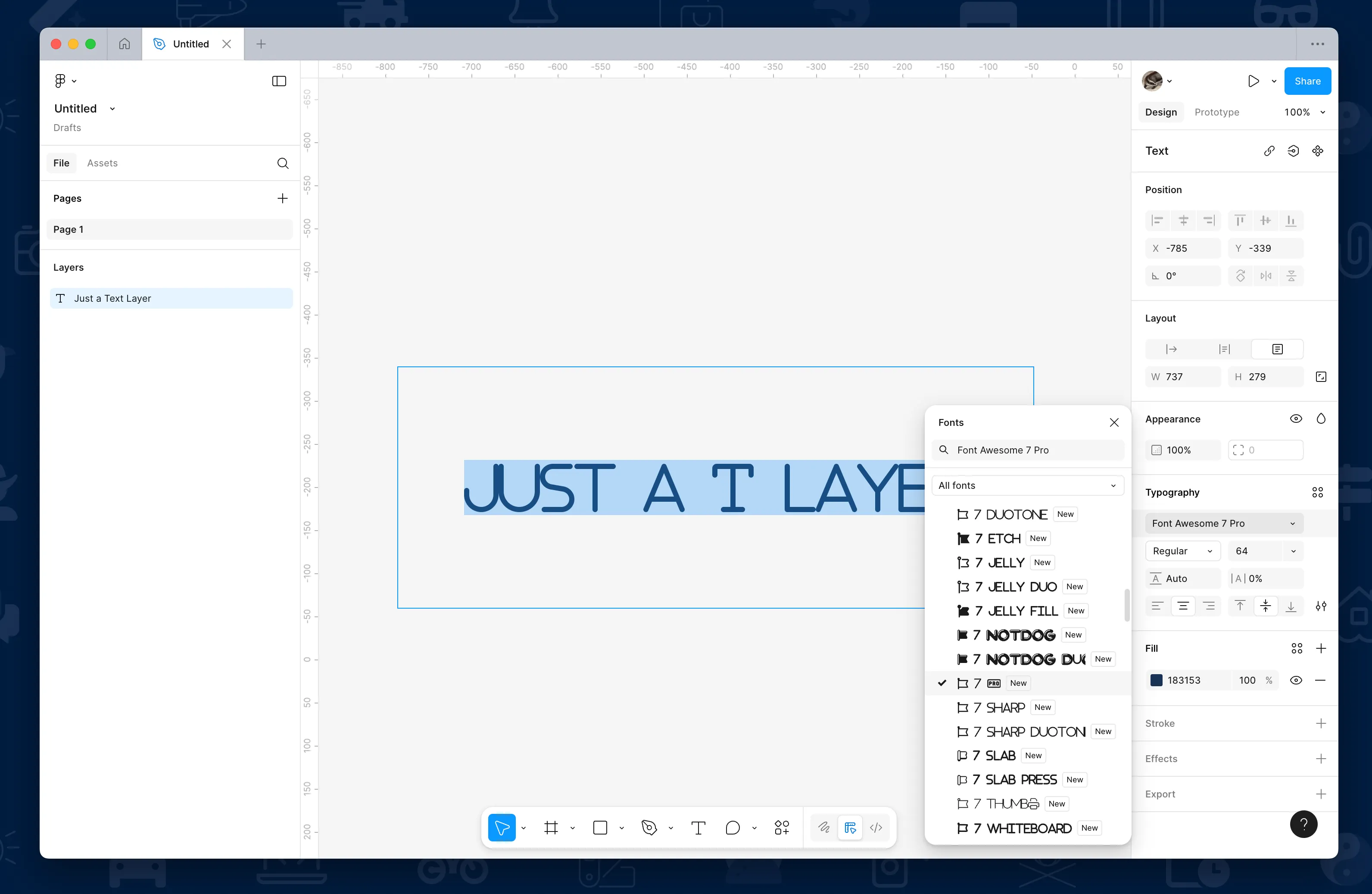 Selecting Font Awesome 7 Pro
Selecting Font Awesome 7 Pro
Copy the Icon’s Glyph
Section titled “Copy the Icon’s Glyph”Next, you’re all set to reference the icon you want to use. First, find the icon and copy its glyph to your clipboard.
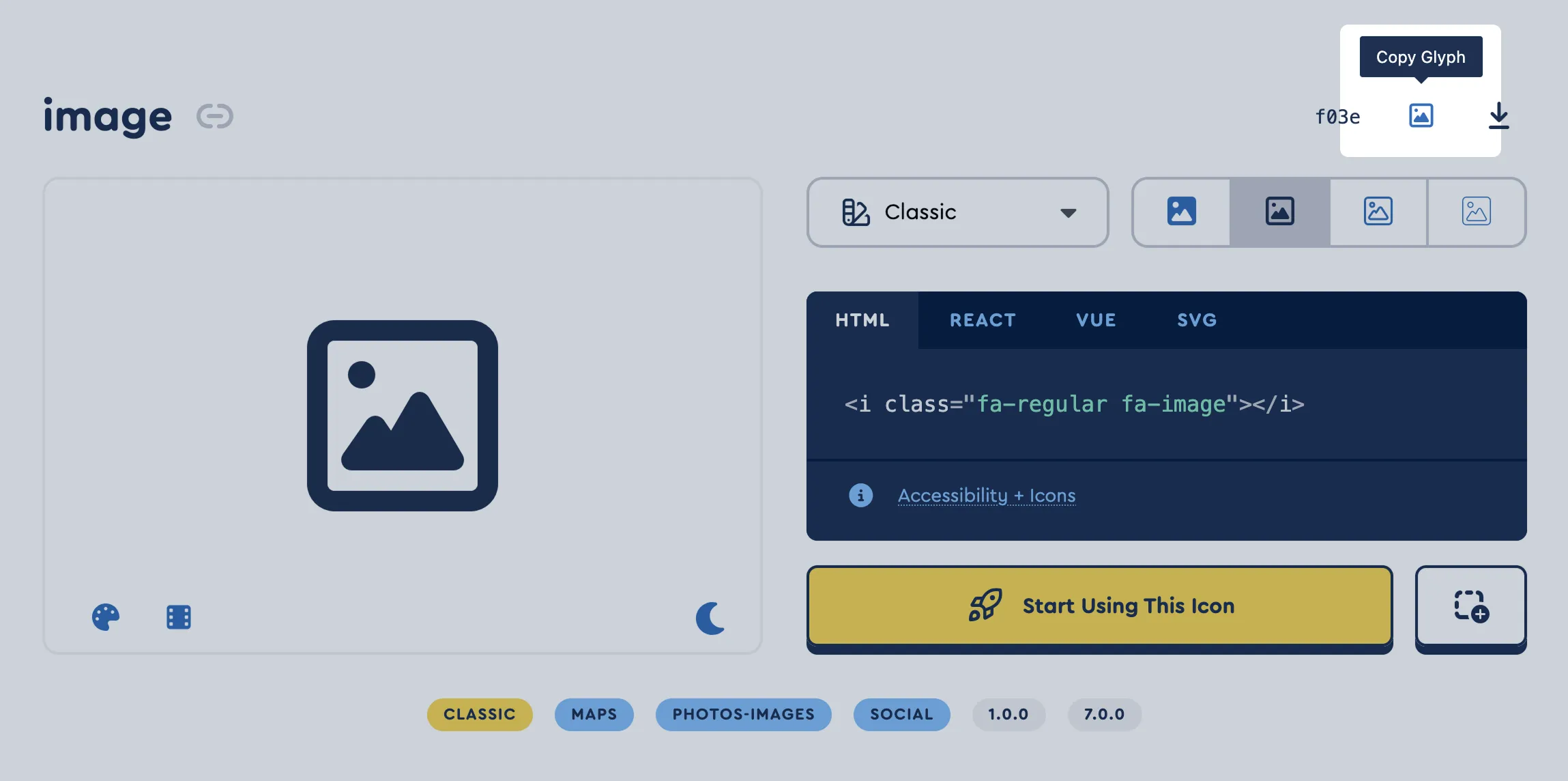 Select the copy glyph button on any icon’s details
Select the copy glyph button on any icon’s details
Then, paste the glyph of that icon into the text layer you’ve created.
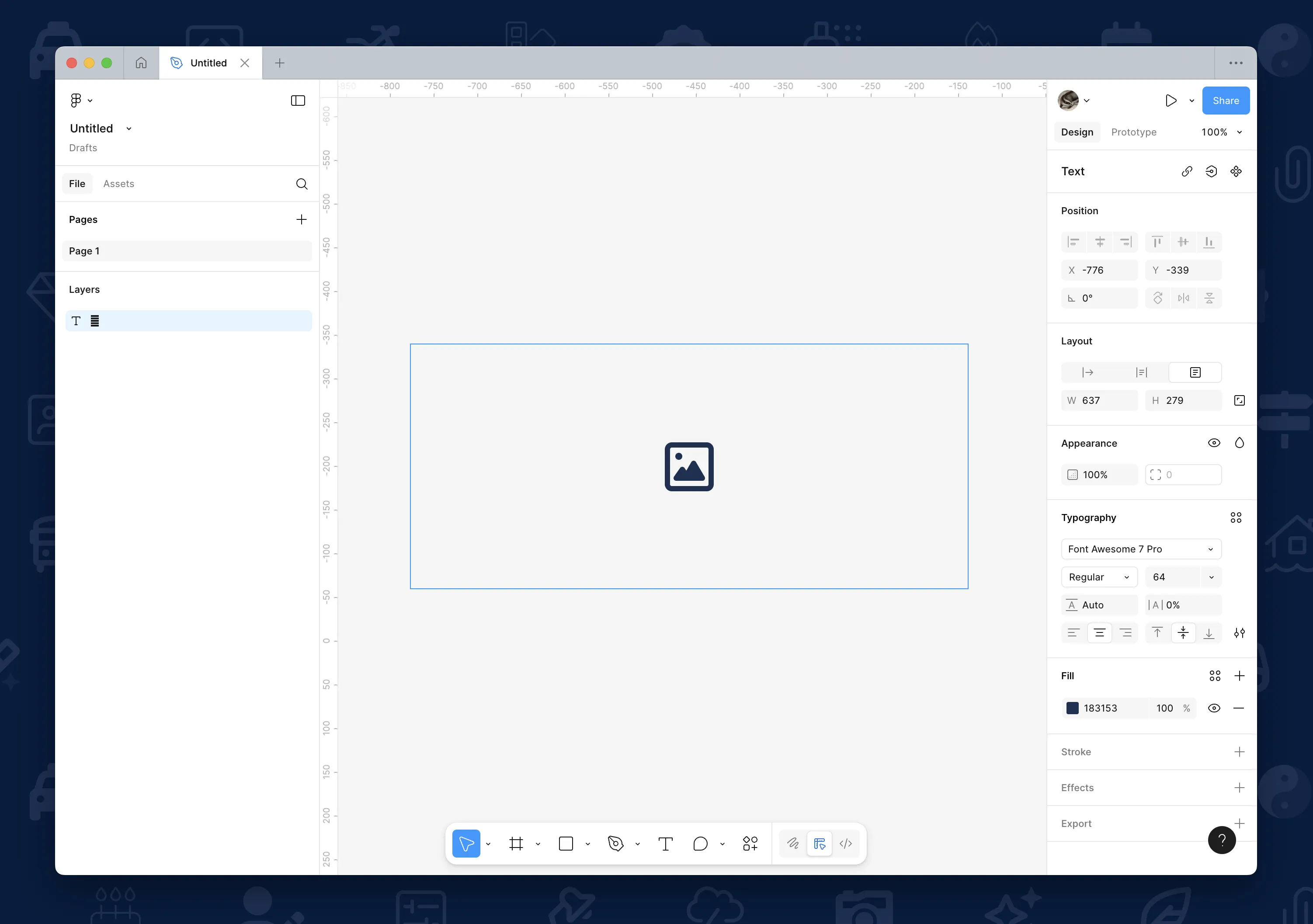 The glyph for the Image icon pasted into the text layer renders the icon
The glyph for the Image icon pasted into the text layer renders the icon
Adding Kit Custom Icons
Section titled “Adding Kit Custom Icons”If you are using the Kit custom icon font, it works the same as all the other Font Awesome font glyphs. First import and select the Kit custom font located in the otfs folder of your Kit Download files. Then copy the glyph from your Custom Icon details in your Kit, paste the icon’s glyph into a text layer, and it will appear!
Choose a Style by Adjusting Font Weights
Section titled “Choose a Style by Adjusting Font Weights”Font Awesome comes in several styles, depending on the typeface you’re using. If you’ve installed all .otf files, you can change the weight of your text layer/block to switch between the different icon styles.
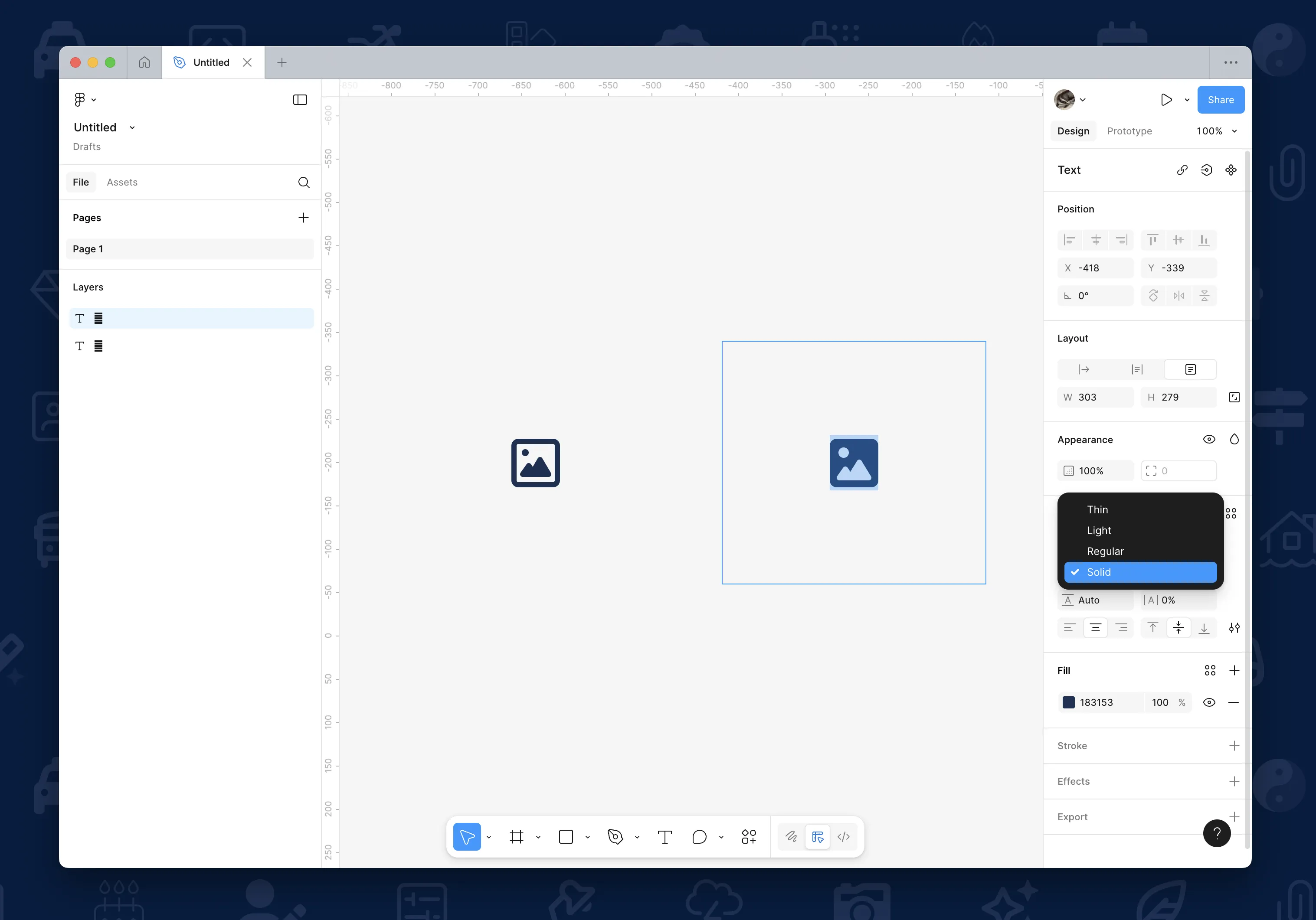 Switching from Regular to Solid style of the Image icon
Switching from Regular to Solid style of the Image icon
Duotones and Glyphs
Section titled “Duotones and Glyphs”You can add duotone icons into your designs as glyphs, but you’ll need add each of the two layers separately and then take an extra step to align the two layers. You’ll find the glyphs in any icon’s quick preview in the icon gallery or an icon’s detail page.
Find the Icon and Copy the Glyphs
Section titled “Find the Icon and Copy the Glyphs”First, find the icon you want to use in the icon gallery.
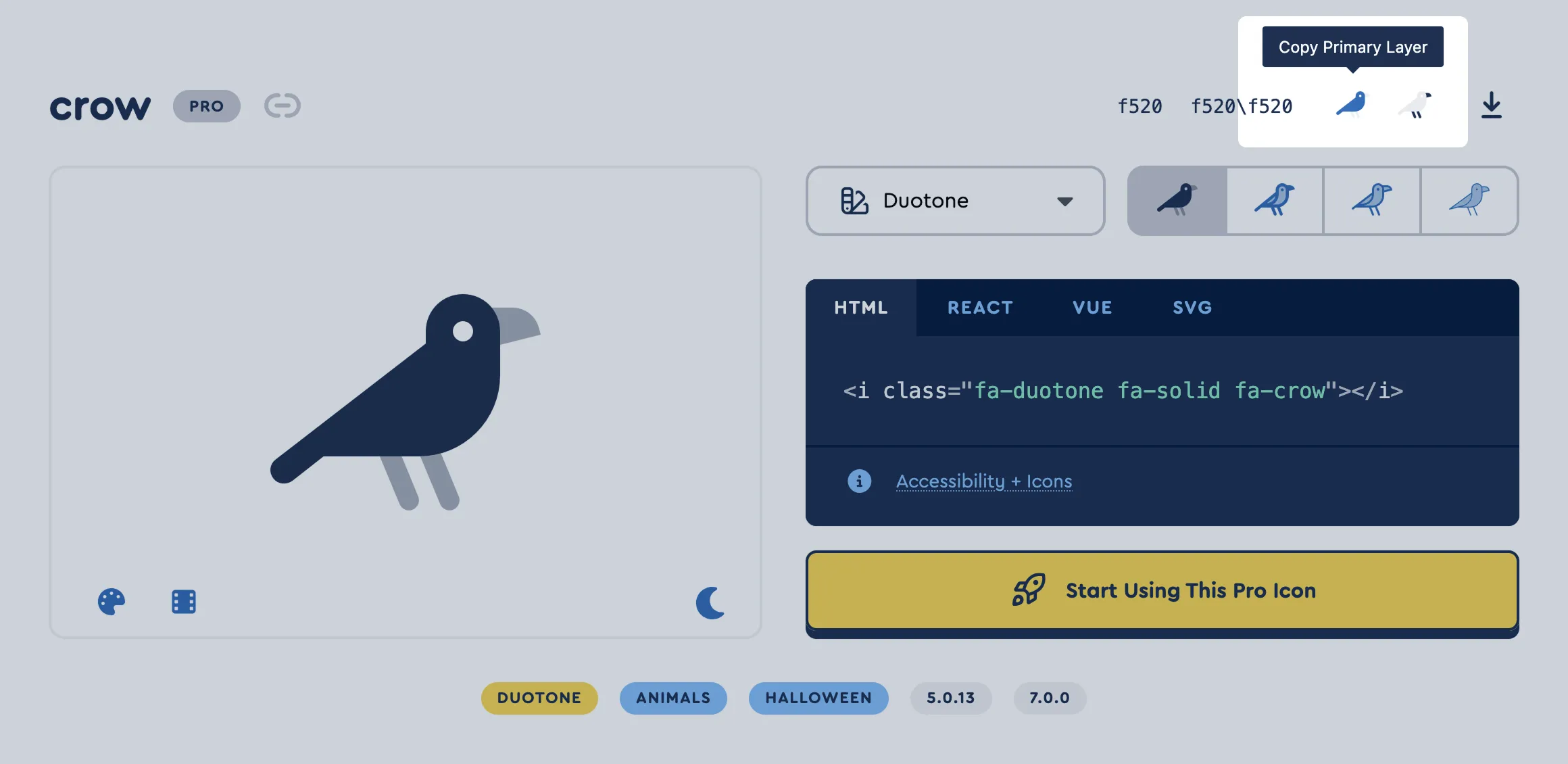 Copy the primary and secondary glyphs
Copy the primary and secondary glyphs
Copy the glyphs one at a time and paste them in your graphics program.
Paste into Your Design App
Section titled “Paste into Your Design App”Open up your desktop design app and create a text box with the font set to Font Aweseome 6 Duotone, then paste in the primary glyph. Create a second text box and epeat for the secondary glyph. Change the font size to the size you want them to appear and set the text boxes to the same height and width.
 Assemble and align the parts of the duotone icon
Assemble and align the parts of the duotone icon
Adjust the color and opacity of the two layers as you like. The last step is to align the two text boxes to overlap using the align tools for vertical and horizontal center.